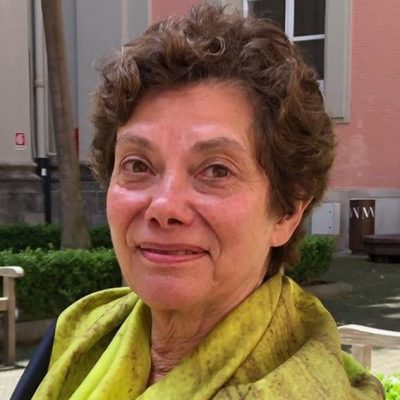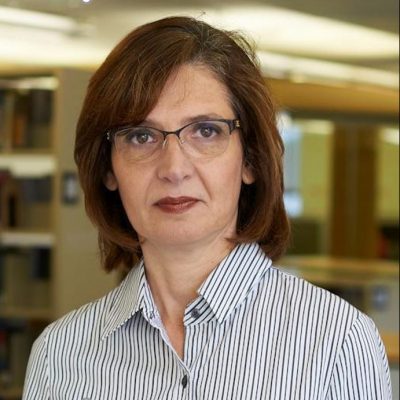Introduction to Assessment and Feedback Practices
Dr Christina Magkoufopoulou; Dr Leslie Schneider; Dr Alice Cherestes; and Dr Andrew Middleton
Assessment and Feedback are an integral part of the learning process and although we would have preferred not to make an explicit distinction within this section and the section of Teaching Strategies, the theory that underpins assessment and feedback is too valuable not to be given the right amount of attention within a book entitled ‘Ideas for Active Learning’.
Student assessment and feedback are critical aspects of teaching and learning. In the context of active learning instructional strategies, the focus is on alternative tools like authentic assessment, formative assessment, and peer feedback. Such forms of assessment encourage the growth of student agency and initiative (Klemenčič, 2020) and when carefully designed, they can further promote higher-order thinking processes moving students up in Bloom’s Taxonomy (Tabrizi & Rideout, 2017).
According to Biggs and Tang (2011), assessment needs to be considered in the early stages of planning any learning and teaching activities and it needs to be explicitly aligned to the Learning Outcomes of the course.
One of the biggest obstacles to the effective use of assessment is the lack of assessment literacy for both academics and students (Deeley & Bovill, 2017; Nicol, 2009; Smith et al. 2013). Hancock and East and Merrydew provide practical examples that can be used to facilitate the development of assessment literacy for both staff and students through active workshops where group work not only offers support for the cognitive dimension of learning, but also for the affective dimension (Järvenoja, & Järvelä, 2013). Harvey and Dodd address this issue and support academics’ development of assessment literacy through institutionally established communities of practice that explore authentic assessment.
Assessment literacy presupposes that the purpose of assessment and the marking criteria are clearly understood. One approach to achieve that is by co-creating assessments with students (Bovill, 2020). This would also give learners the opportunity to develop and express their learner actorhood (Klemenčič, 2020). To that end, the guidance provided by Walden and by Horrocks could be adapted for a wide range of contexts.
The formative assessment tasks included in this section, not only aim to support students’ understanding of the topic but also to enhance students’ collaboration skills through group crossword activities (Stockton-Brown) group storytelling activities (Surendran),and digital storytelling activities (Beggs). Group interaction exposes students to different views giving learners the chance to examine dense material from multiple perspectives (Cohen & Sampson, 2001; Mezirow, 1978). To that end, peer-feedback and formative peer assessment can further support the development of collaboration and communication skills as well as critical thinking skills (Topping, 1998; Strijbos & Wichmann, 2018). In their chapter, Cherestes and Schneider describe how Visual Classrooms, a collaborative learning platform, can be used along with carefully scaffolded activities, to enhance students’ feedback literacy.
Although active learning is commonly associated with collaborative and cooperative work, individual active learning tasks and assessments are equally valuable for deeper learning as they encourage ownership of learning. Self-assessment (the ability to make judgements on students’ own approach to task and quality of their work) and self-reflection can be seen as the most critical graduate attributes (Tangney, 2018). Farrow presents how these skills can be achieved through scenario based learning, whereas Saunders links self-reflection with summative assessment in his chapter on the ‘Reflective Elevator Pitch’.
Student engagement is one of the approaches that academics use to evaluate students’ performance with some incorporating engagement and participation in summative assessment elements (Czekanski & Wolf, 2013). Two great examples are included in this section. Perlman-Dee introduces how a combination of low-stakes active engagement assessments that include active participation in class and completion of independent tasks can be used to enhance students’ engagement and learning, whereas Vianya-Estopa incorporates active engagement with discussion forums in summative assessment. When it comes to summative assessment tasks, it is also important to maintain active forms of learning that aim to support the development of key skills students will need beyond the university, as shown with the presentation task introduced by Gowers.
In the last chapter of this section, Betts introduces story-based game learning, and presents through constructive alignment how assessment and peer- and self-reflection can be embedded in game-based learning where in addition to the course learning outcomes, the assessment aligns with the goals of the story’s protagonist.
In summary, within this section the reader will be able to identify active learning strategies for enhancing staff and students’ assessment and feedback literacy, strategies for creating ‘active assessment’ through the direct engagement of students in all assessment steps including the co-creation of assessment modes and assessment criteria; and strategies for developing and implementing authentic, and engaging assessments. These help students develop essential lifelong skills such as collaboration, communication, self-reflection and self-awareness.
References
Biggs, J. B., & Tang, C. S. (2011). Teaching for quality learning at university: What the student does (4th ed.). Society for Research into Higher Education & Open University Press.
Bovill, C. (2020). Co-creation in learning and teaching: the case for a whole-class approach in higher education. Higher Education, 79(6), 1023–1037. https://doi.org/10.1007/s10734-019-00453-w
Cohen, R., & Sampson, J. (2001). Implementing and managing peer learning. In D. Boud, R. Cohen & J. Sampson (Eds.), Peer learning in higher education: Learning from and with each other (1st ed.). Routledge. https://doi.org/https://doi.org/10.4324/9781315042565
Czekanski, K. E., & Wolf, Z. R. (2013). Encouraging and evaluating class participation. Journal of University Teaching & Learning Practice, 10(1), 3–14. https://doi.org/10.53761/1.10.1.7
Deeley, S. J., & Bovill, C. (2017). Staff student partnership in assessment: Enhancing assessment literacy through democratic practices. Assessment and Evaluation in Higher Education, 42(3), 463–477. https://doi.org/10.1080/02602938.2015.1126551
Järvenoja, H., & Järvelä, S. (2013). Regulating emotions together for motivated collaboration. In M. Baker, J. Andriessen & S. Järvelä (Eds.), Affective learning together; social and emotional dimensions of collaborative learning. Taylor & Francis Group.
Klemenčič, M. (2020). Students as actors and agents in student-centered higher education. In S. Hoidn & M. Klemenčič (Eds.), The Routledge international handbook of student-centered learning and teaching in higher education (pp. 92–108). Routledge.
Mezirow, J. (1978). Perspective transformation. Adult Education, 28(2), 100–110. https://doi.org/https://doi.org/10.1177/074171367802800202
Nicol, D. (2009). Assessment for learner self-regulation: Enhancing achievement in the first year using learning technologies. In Assessment and Evaluation in Higher Education 34(3), 335–352. https://doi.org/10.1080/02602930802255139
Smith, C. D., Worsfold, K., Davies, L., Fisher, R., & McPhail, R. (2013). Assessment literacy and student learning: The case for explicitly developing students ‘assessment literacy’. Assessment and Evaluation in Higher Education, 38(1), 44–60. https://doi.org/10.1080/02602938.2011.598636
Strijbos, J. W., & Wichmann, A. (2018). Promoting learning by leveraging the collaborative nature of formative peer assessment with instructional scaffolds. European Journal of Psychology of Education, 33(1), 1-9. https://doi.org/10.1007/s10212-017-0353-x
Tabrizi, S., & Rideout, G. (2017). Active learning: Using Bloom’s taxonomy to support critical pedagogy. International Journal for Cross-Disciplinary Subjects in Education, 8(3), 3202–3209. https://doi.org/10.20533/ijcdse.2042.6364.2017.0429
Tangney, S. (2018). Promoting engagement, active learning and student ownership. In R. Matheson, S. Tangney, & M. Sutcliffe (Eds.), Transition in, through and out of higher education. Routledge.
Topping, K. (1998). Peer assessment between students in colleges and universities. Review of Educational Research, 68(3), 249-276. https://doi.org/10.3102/00346543068003249





